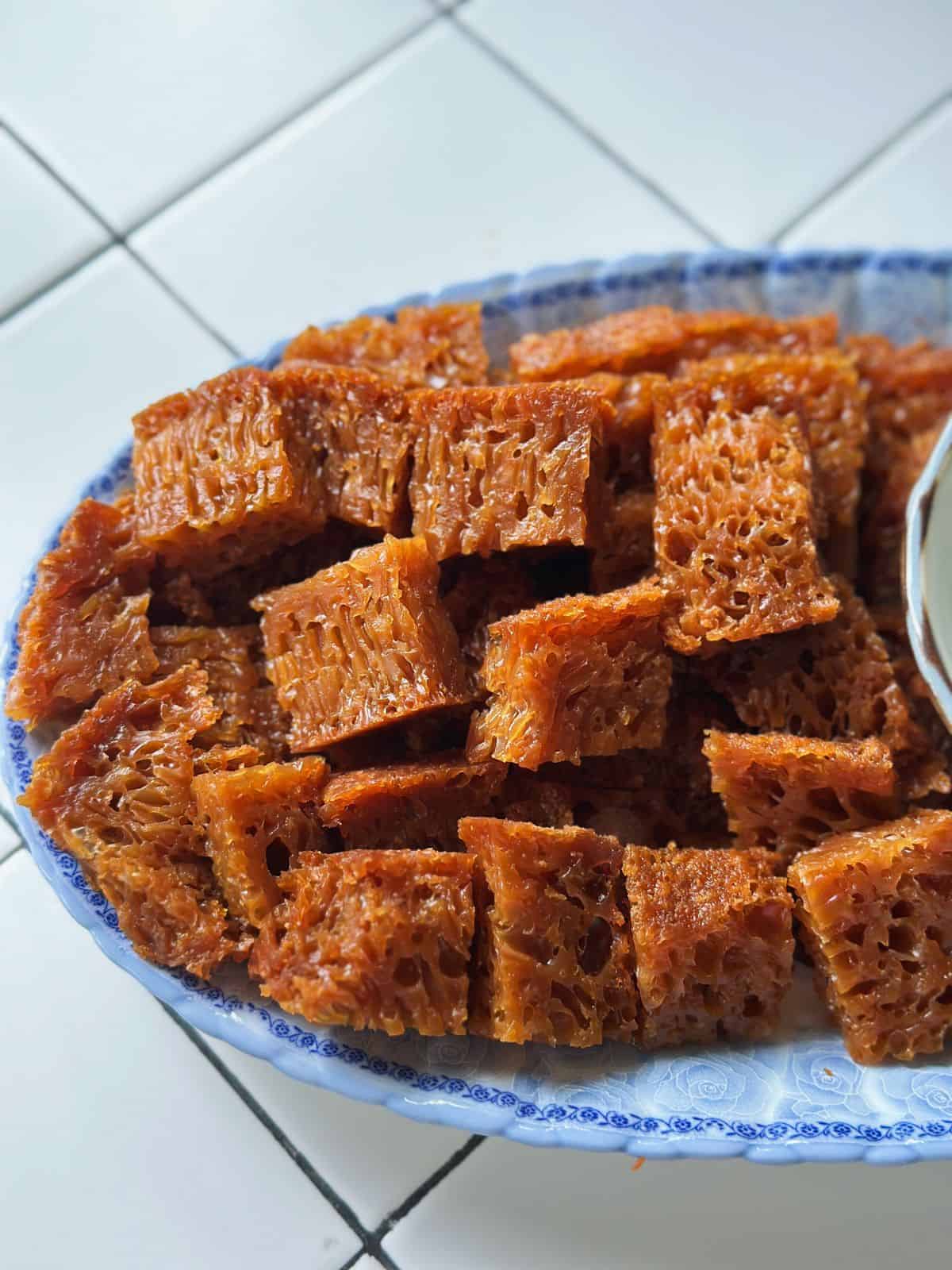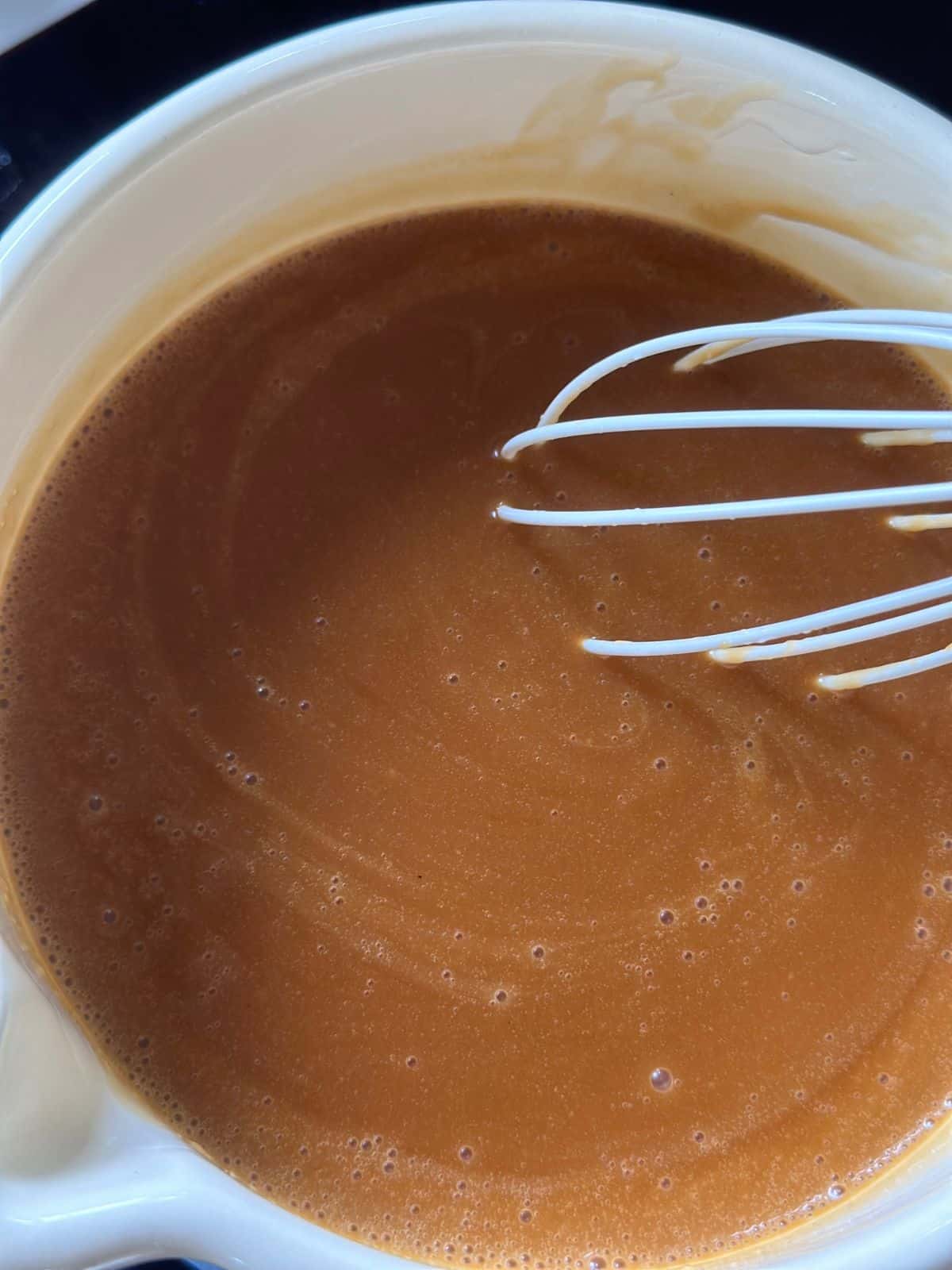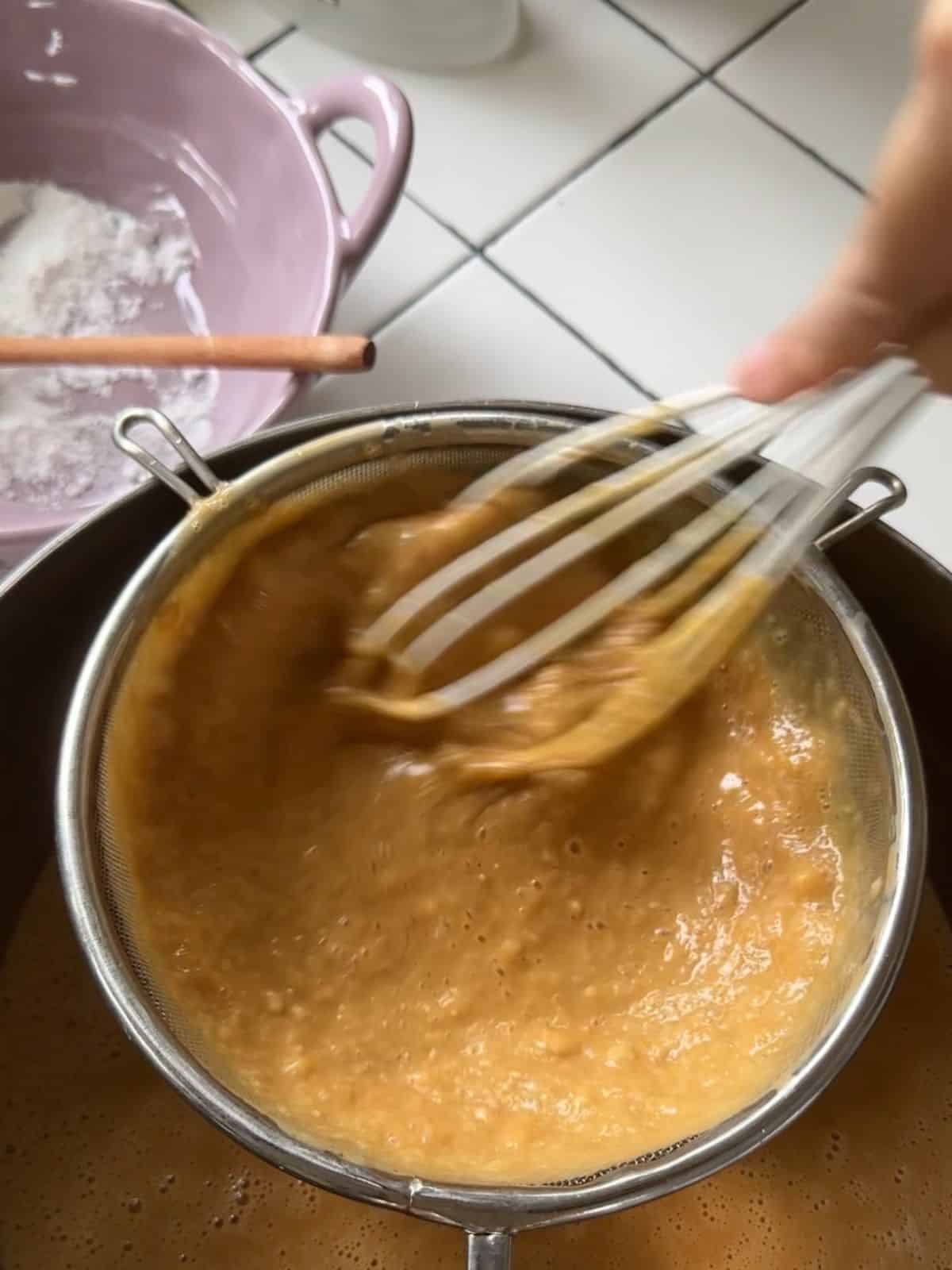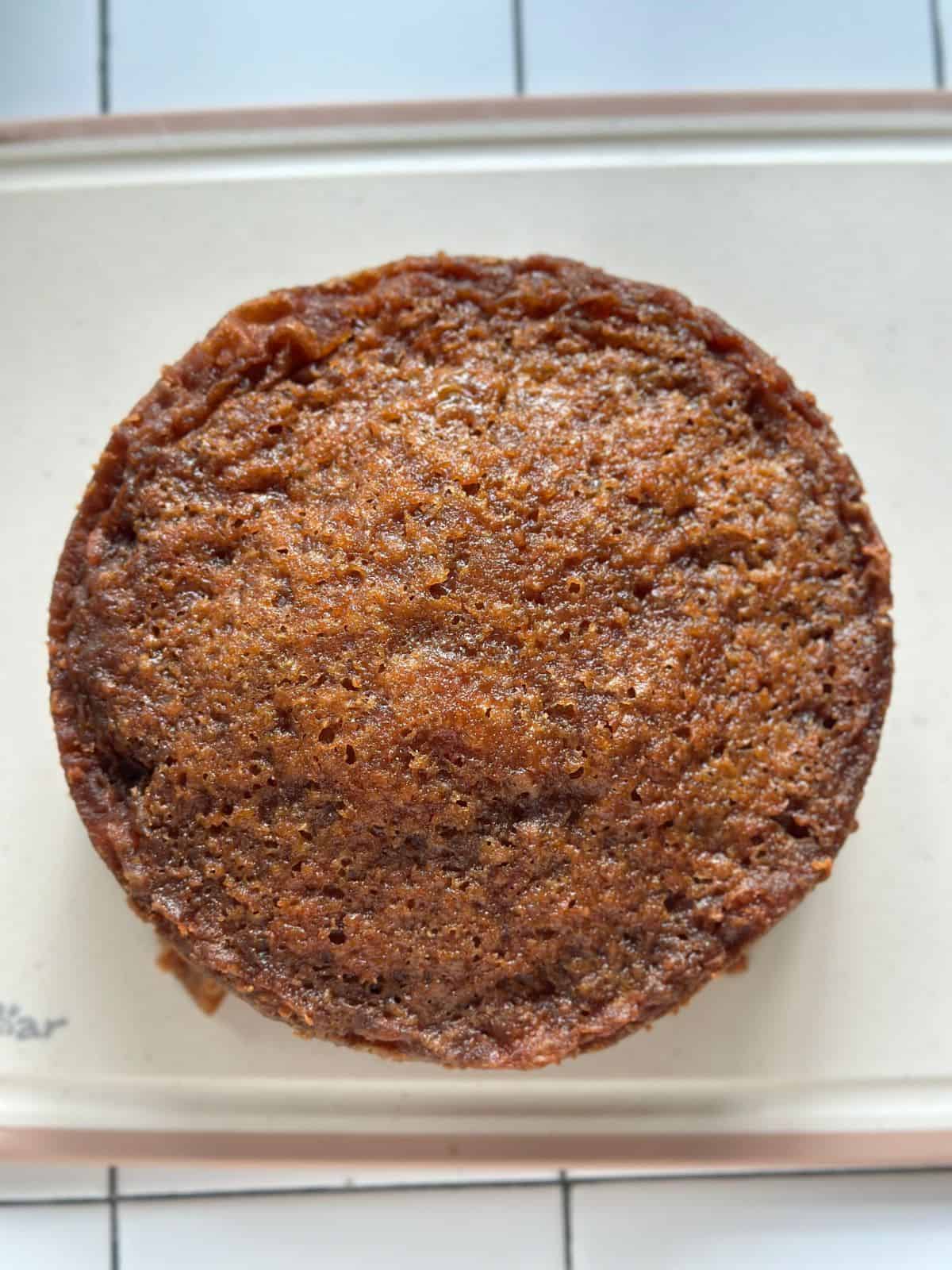Vietnamese palm sugar honeycomb cake (Bánh Bò Nướng Đường Thốt Nốt) is chewy, bouncy, and bursting with caramel-coconut flavor.
Outshining even the classic pandan version, it will hook you from the very first bite!

Palm Sugar Honeycomb Cake > Pandan in Vietnam
Bánh Bò Nướng is always addictive thanks to that fun, bouncy texture—but the flavor can make a big difference.
While the baked pandan honeycomb cake is popular among the Vietnamese diaspora, here in Vietnam, people actually prefer the palm sugar version.

It’s basically the chewy texture of pandan cake mixed with the caramel-y, almost butterscotch flavor of Malaysian Kue Sarang Semut.
Super addictive, and honestly, it’s easier to make than pandan.

Ingredients
- Eggs (Size M) – the base that gives structure and richness.
- Palm Sugar – the real star here with mellow sweetness and deep caramel-butterscotch flavor. Palm sugar paste is the gold standard, blocks are fine, and granulated is my last pick.
Substitutes: brown sugar, black sugar, coconut sugar, muscovado, or jaggery. - Coconut Milk – go full-fat. This is what makes the cake rich, creamy, and utterly luscious.
- Tapioca Starch – the magic behind that chewy, bouncy texture. If you’re a fan of boba pearls, you’ll fall in love with every tapioca-based dessert.
- All-Purpose Flour – keeps the cake tender even the next day. For gluten-free, swap with rice flour or just increase the tapioca starch.
- Baking Powder & Baking Soda – the dynamic duo that creates the honeycomb effect. This version is easier than pandan since we add baking soda alongside baking powder.
- Coconut Oil (or Melted Butter) – for richness and a subtle coconut aroma.
- Salt – just a pinch to balance the sweetness; otherwise, it gets boring.
Instructions
Step 1: Prepare the Batter
- Lightly beat the eggs. In a pot, lightly heat palm sugar, salt, and coconut milk until smooth (don’t boil), then slowly whisk into the eggs. Let cool for 15 minutes.
- Whisk in tapioca starch and flour, strain, then mix in baking powder, baking soda, and coconut oil. Strain again for a smooth batter.


Step 2: Prepare the Mold & Bake
- Grease the mold lightly on the bottom only, then pour in the batter. If your oven can’t turn off the top heat, cover the mold with foil.
- Preheat the oven to 340°F (170°C) (no fan) and turn off the top heat if possible. Let it preheat for about 15–20 minutes, then place the cake on the second rack.
- Bake in stages:
- 15 minutes at 340°F (170°C)
- 30 minutes at 265°F (130°C), uncover (or turn on the top heat)
- Finally, 355°F (180°C) for 15 more minutes, until the top turns beautifully golden.
Step 3: Cool & Enjoy
- Let the cake cool completely in the mold—it makes unmolding much easier.
- Cut into bite-sized pieces. Enjoy it on its own, or even better, drizzle with sweet coconut sauce (highly recommended!).


Expert Tips
Bottom heat is key: For the first 15 minutes, focus on the oven’s bottom heat. You can cover the cake with foil or turn off the top heat. The top heat is only for browning the golden top—not for building the structure.
Adjust the temperature: The temperatures I share are just a guideline. Every oven behaves differently, so feel free to tweak as needed.
Check your baking powder and baking soda: Double-acting or single-acting—both work fine, so no need for Alsa specifically. Just make sure they’re fresh and still active for the best rise and honeycomb texture.
Cool the coconut milk mixture: Let it cool to just warm. If it’s too hot, it can gelatinize the tapioca starch and ruin the cake.
Measure by kitchen scale: Honeycomb cake needs precise measurements. Too much liquid will make the batter runny and cause the cake to shrink after baking. Even for eggs, if they’re extra large, consider removing some egg white.
More tasty Vietnamese “Bánh” desserts
Vietnamese Steamed Banana Cake (Bánh Chuối Hấp)
Vietnamese Banana Cake (Bánh Chuối Nướng)
Vietnamese Mung Bean Cake (Bánh Đậu Xanh Nướng)
Vietnamese Cassava Cake (Bánh Khoai Mì Nướng)
Vietnamese Flan (Bánh Flan)
Vietnamese Steamed Rice Cake (Bánh Bò Hấp)
Ube Honeycombe Cake (Bánh Bò Ube)

Vietnamese Honeycomb Cake (Palm Sugar Banh Bo Nuong)
Equipment
- 1 round baking pan (7-8 inch diameter or 18-20 cm)
Ingredients
I highly recommend using a kitchen scale to measure.
- 3 eggs (Size M)
- 140 g tapioca starch
- 10 g all-purpose flour (or rice flour or tapioca starch)
- 240 g coconut milk (full-fat)
- 5 g coconut oil (or melted butter) (about 1 tsp)
- 180 g palm sugar
- 4 g baking powder (double-acting or single-acting) (almost 1 tsp)
- 2 g baking soda (almost ½ tsp)
- ½ tsp salt
- Cooking oil (for greasing the pan)
Instructions
Prepare the Batter
- Lightly beat the eggs.
- In a pot, gently heat palm sugar, salt, and coconut milk until smooth (don’t boil). Slowly whisk into the eggs and let cool for 15 min.
- Whisk in tapioca starch and flour, then strain. Mix in baking powder, baking soda, and coconut oil. Strain again for a smooth batter.
Prepare the Mold & Bake
- Grease the bottom of the mold only, then pour in the batter. Cover with foil if your oven can’t turn off top heat.
- Preheat oven to 340°F (170°C), no fan, top heat off if possible, 15–20 min.
- Place the cake on the second rack. Bake in stages:– 15 min at 340°F (170°C)– 30 min at 265°F (130°C), uncover (or turn on top heat)– Finally, 355°F (180°C), bake 15 min more until golden.
Cool & Enjoy
- Let cake cool completely in the mold for easy unmolding.
- Cut into bite-sized pieces. Enjoy on its own or drizzle with sweet coconut sauce (highly recommended!).
